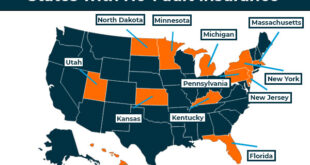Personal Loan Fees Comparison: Finding the Best Option When exploring personal loans, understanding and comparing fees is crucial. Loan fees can significantly impact your borrowing costs, making it essential to evaluate and choose wisely. This article provides a comprehensive guide to comparing personal loan fees, ensuring you make an informed decision while adhering to SEO-friendly principles.
What Are Personal Loan Fees?
Personal loan fees are additional charges lenders impose during the loan process. These can include application fees, origination fees, late payment fees, and prepayment penalties. Understanding these fees helps you accurately assess the true cost of borrowing.
Types of Personal Loan Fees
1. Application Fees
Charged when you apply for a loan, these fees cover the cost of processing your application. Some lenders waive this fee, so look for such options.
2. Origination Fees
This one-time fee covers administrative tasks like document verification and disbursing funds. Typically, it ranges from 1% to 6% of the loan amount.
3. Late Payment Fees
Charged when you miss a payment due date. Late fees vary by lender, often ranging from $25 to $50.
4. Prepayment Penalties
If you pay off your loan early, some lenders charge this fee to compensate for lost interest.
5. Insufficient Funds Fees
Charged if your payment bounces due to insufficient funds in your account.
6. Annual Fees
Some lenders impose yearly fees for maintaining your loan account, especially for revolving credit lines.
7. Check Processing Fees
If you pay via check instead of electronic means, some lenders may charge a processing fee.
How to Compare Personal Loan Fees
1. Read the Fine Print
Review the loan agreement carefully to understand all associated fees.
2. Use a Loan Comparison Tool
Online tools provide an easy way to compare fees across multiple lenders.
3. Ask About Hidden Charges
Contact lenders directly to clarify if there are any hidden or conditional charges.
4. Look for No-Fee Loans
Some lenders offer personal loans with no origination, application, or prepayment fees.
5. Assess Total Cost of Borrowing
Calculate the annual percentage rate (APR), which includes the interest rate and all fees, to determine the true cost.
10 Tips to Minimize Personal Loan Fees
- Shop Around: Compare offers from multiple lenders.
- Negotiate Fees: Some lenders may waive or reduce fees upon request.
- Improve Credit Score: A higher credit score often qualifies you for lower fees.
- Opt for Digital Payments: Avoid check processing fees by paying online.
- Avoid Late Payments: Set reminders or automate payments.
- Choose No-Fee Loans: Look for lenders advertising no origination or prepayment penalties.
- Check for Discounts: Some lenders offer discounts for autopay enrollment.
- Borrow Only What You Need: Higher loan amounts can lead to higher fees.
- Understand APR: Focus on the APR instead of just the interest rate.
- Refinance Strategically: If fees are too high, consider refinancing with a more affordable lender.
10 FAQs About Personal Loan Fees
1. What are personal loan fees?
Fees associated with processing, disbursing, and managing a personal loan.
2. Are all personal loans subject to fees?
Not all. Some lenders offer no-fee loans.
3. What is an origination fee?
A one-time charge for processing the loan, typically a percentage of the loan amount.
4. Can I avoid late payment fees?
Yes, by setting up payment reminders or enrolling in autopay.
5. Are prepayment penalties common?
They depend on the lender. Many online lenders waive prepayment penalties.
6. What is an insufficient funds fee?
A charge when your bank account lacks funds to cover a payment.
7. Do online loans have fewer fees?
Often, online lenders offer more competitive rates and fewer fees.
8. How does my credit score affect fees?
Higher credit scores typically result in lower fees and better terms.
9. What is the APR?
The annual percentage rate combines interest rates and fees into one figure for comparison.
10. Can I negotiate loan fees?
Yes, especially if you have a strong credit profile or are a loyal customer.
Conclusion
Comparing personal loan fees is a critical step in selecting the best borrowing option. By understanding the types of fees, their impact on your loan, and strategies to minimize costs, you can make an informed decision. Remember, the total cost of borrowing isn’t just about interest rates but also about the fees you pay.
When choosing a lender, focus on transparency, affordability, and overall value. By being proactive in your research and negotiation, you can save money and avoid unnecessary expenses. Use the tips provided to secure a loan that fits your needs without breaking the bank.
 Gerbang Finance
Gerbang Finance

